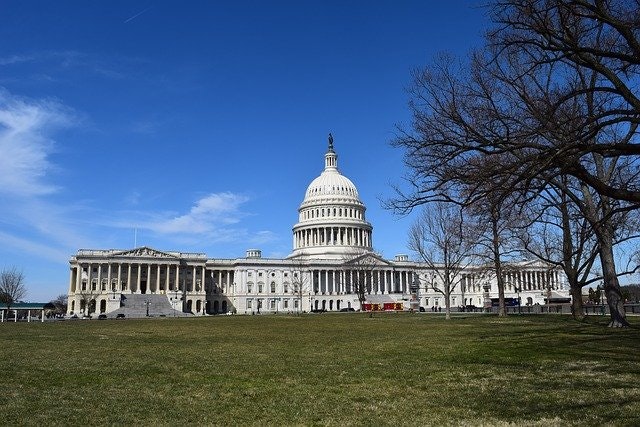Leaders Set the Stage for Conquering Climate Change

Could 2021 be the year when the world emerges from one global crisis and starts making significant progress against another one?
The conditions of the past year, including widespread stay-at-home orders that contributed to a reduction in road transport activity and lower fossil fuel consumption, triggered the largest drop in global energy-related CO2 emissions since WWII – estimated at 11% in the U.S. alone and around 6% globally. However, as our COVID-fatigued communities began to emerge from virus-related restrictions, emissions have rebounded strongly.
In the meantime, the damaging impact of climate change remains an enduring challenge that won’t be erased by efforts that take place in a single year. It’s also one where simple, isolated solutions will not be enough to effectively address the full complement of contributing factors. As such, it will take consistent and unified intervention on multiple, global fronts to maintain the small gains experienced in 2020 and scale them significantly enough to preserve the livability of our planet.
As International Energy Agency Executive Director Dr. Fatih Birol recently stated, “If governments don’t move quickly with the right energy policies, it could put at risk the world’s historic opportunity to make 2019 the definitive peak in global emissions.”
In the U.S., the Biden Administration is aiming to put such interventional policies in place. In addition to rejoining the Paris Climate Accord, the President has unveiled an ambitious sustainable infrastructure and equitable clean energy plan, with a strong focus on three key areas:
- Ensuring the U.S. achieves a 100% clean energy economy and net-zero emissions no later than 2050
- Building a stronger, more resilient infrastructure economy – including measures to prevent resiliency investments from disproportionately harming communities of color and low-income communities
- Implementing energy efficiency standards for buildings, homes, and appliances that will contribute to community-wide improvements in energy usage.
But what will it take to enact the lofty goals outlined in this proposal? And what else should sustainability industry leaders be doing to prepare for the impending regulatory, attitudinal, and process shifts these initiatives will require?
To help your business take these initiatives off the drawing board and into the real world, we reached out to experts in sustainability design, architecture, energy, government, and other relevant industry sectors. You’ll find a snapshot view of their initial thoughts, concerns, and recommended actions below:
Reengineering and recharging our energy reserves
According to the draft proposal, the U.S. is looking to make a historic investment in energy-efficient technology, systems, materials, and infrastructure that will address the country’s previous sustainability bottlenecks, unlock its full clean energy potential, and create new jobs to stimulate the economy.
But what does the picture look like from an operational standpoint? And how will the push towards decarbonization, greater energy efficiency, and energy standardization shape the work that industry professionals want to achieve in 2021 and beyond?
The Biden plans are just reinforcing how important it is to make new net-zero carbon emissions the focus and the frame for how we think about energy-related components. Yet, there's also the potential for a very large amount of money to flow into these projects. So, we’re making sure that our clients are aware of those potential opportunities. We’re watching as ideas get turned into legislation, and legislation gets turned into programs, to make sure we're preparing them and their projects to be ready to go once those resources become available. —Kim Vermeer, President and Co-founder, Urban Habitat Initiatives
We need to look at this as a significant opportunity to mitigate greenhouse gas emissions through energy efficiency, electrification and, of course, a carbon-free energy supply. When we think about doing different things differently, change is not always easy. We need deeper collaboration among the people who design buildings, the people who operate buildings, and, of course, the people who use buildings to produce the emissions results this plan is looking to achieve. —Gautami Palanki, VP of Sustainability, Howard Hughes Corporation
Making resilience equitable
While resilience needs can vary widely across different geographies, landscapes, and community populations, it’s critical that our industry’s efforts don’t leave anyone out of the picture.
That includes disadvantaged populations that often bear the brunt of pollution and those living in low-income communities, older existing buildings, or in areas that are becoming increasingly vulnerable to climate-related disasters such as fires and floods.
I think urban communities have been under-resourced and no one's really invested in them, especially regarding the sustainability efforts. If you look at a lot of sustainability projects they typically are not located in urban environments. We really need to change that conversation, so that those underserved, marginalized communities actually are being invested in a sustainable, resilient way and, in turn, those investments can build up those communities and help make them whole again. —Edward Bartholomew, Principal, Bartholomew Lighting
To me, it was profound in that the plan diverges from the standard, siloed view that thinking about climate and thinking about the economy need to be kept separate. I agree with climate policy analyst Ali Zaidi when he said that the output of good economic policy is good climate policy. You can't have one without the other – just as you can't have environmental justice if you don't have social justice. And the success of all of these factors is necessary for global success around sustainability. —John Mlade, Director of Sustainable & Healthy Environments, Wight & Company
Shifting our understanding of infrastructure
Without the right foundation to support them, none of our industry’s green community goals will be achievable, let alone sustainable over the long term.
But with so many links to connect across a vast and complex supply chain, success will depend on accelerated innovation, a strong investment in education, and cooperation among parties – including those whose interests may conflict – on a scale that’s never been attempted before.
It’s really time to redefine what infrastructure means. There was a time when it was just about the roads, bridges, ports, railways… But when it comes to what is needed in order to be a productive society with economic growth potential today, of course internet needs to be on that list. Infrastructure has increasingly become also social infrastructure. It’s absolutely essential that this plan recognizes that times have changed and that we need to broaden the definition, in response. —Elena Bondareva, Strategist, Advisor, and Director of Pollinate Group and the William J. Warden Foundation
The fossil fuel industry is HUGE, powerful, and provides around 5.6% of U.S. employment according to PWC. I am concerned that without some type of legislation to drive them, these changes will not happen fast enough. Switching our economy from fossil fuel to renewable energy will be difficult; and, undoubtedly, firms and individuals stand to get hurt and will fight change. Not only do federal, state, and local governments need to get on board and coordinate their efforts to quickly identify what works, share successes, and adopt best practices, the government will need to find ways to support workers in industries that become obsolete. That will be tremendously difficult to accomplish. —David Kaneda, Principal & Thought Leader, IDeAs Consulting
Aligning efforts and taking action
Of course, for any environmental legislation to succeed, it will require a coordinated and collaborative effort across all sectors of the sustainability industry, as well as widespread support and participation at the governmental, corporate, and citizen levels.
It won’t be easy to accomplish; but with the stakes so high and time running out, even the smallest steps we are able to take now will bring us that much closer to achieving our largest goals.
There are some complaints that the plan doesn't go far enough on some climate-specific policies. There's good breadth, but I think it's really important not to let the perfect be the enemy of the good here. I think this gives us a really good starting point to reap some rewards, show some benefits over the next couple of years, and then use that as leverage to move forward and push even further in the future. This plan represents an investment. It's an investment that will pay out returns for many, many years and decades after that initial investment is made. —Danielle Wilmot, Manager of Implementation, Blue Ocean Sustainability
I think it’s time for everyone – from HVAC suppliers and distributors to mainstream real estate developers to financing organizations in the building sector – to think about how they can contribute, not just a few enlightened architects or developers. Everyone in the process of delivering and operating buildings has a role to play, and we can all do more. —Shanti Pless, Senior Research Engineer, National Renewable Energy Laboratory
Get an Insider view on this issue, and others
These comments are just the tip of the iceberg. You'll find more expert perspectives and recommendations in our new eBook: Building a Greener U.S. Future: Insights and Actions.
To view the complete eBook – as well as videos of our experts’ full conversations – sign up to join the Greenbuild Insider community. Insider membership is your all-access pass to exclusive events, networking opportunities, and our full library of on-demand CE-accredited courses, along with lots more original content, industry news, and innovative sustainability projects and ideas.
About the author
 Jodi Harris is Director of Content Strategy at Informa Connect. Prior to this role, Jodi spent over a decade developing and managing content initiatives for clients in the entertainment, CPG, health care, technology, and biotech industries, as well as for agencies and media brands. Follow Jodi on Twitter @Joderama.
Jodi Harris is Director of Content Strategy at Informa Connect. Prior to this role, Jodi spent over a decade developing and managing content initiatives for clients in the entertainment, CPG, health care, technology, and biotech industries, as well as for agencies and media brands. Follow Jodi on Twitter @Joderama.
